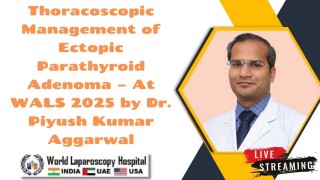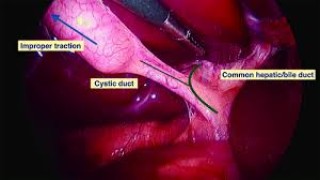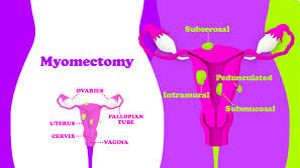Laparoscopic Inguinal Hernia Repair: TAPP Technique Step-by-Step Surgical Procedure
Add to
Share
10 views
Report
14 hours ago
Description
Laparoscopic inguinal hernia repair using the TAPP (Transabdominal Preperitoneal) technique represents one of the most refined and advanced procedures in minimally invasive surgery. At World Laparoscopy Hospital (WLH)—a globally recognized center of excellence in laparoscopic and robotic surgery—this procedure is performed with precision, following the highest standards of safety, training, and innovation. Introduction to the TAPP Technique The TAPP technique involves entering the peritoneal cavity laparoscopically, creating a preperitoneal space, and placing a mesh to reinforce the weakened area of the inguinal canal. Unlike open hernia repair, this method offers less postoperative pain, faster recovery, minimal scarring, and quicker return to normal activity. At World Laparoscopy Hospital, under the expert guidance of Dr. R. K. Mishra, surgeons learn and perform the TAPP repair with an emphasis on anatomical accuracy, ergonomics, and safe surgical principles. Step-by-Step Surgical Procedure 1. Patient Preparation and Positioning The patient is placed in a supine position with arms tucked by the side. After general anesthesia, the patient is given a slight Trendelenburg tilt to allow the intestines to move away from the pelvis, providing a clear view of the inguinal region. 2. Port Placement Three ports are typically used: A 10 mm umbilical port for the laparoscope. Two 5 mm working ports on either side of the midline, just above the level of the umbilicus. Proper triangulation ensures optimal instrument movement and visibility of the myopectineal orifice. 3. Creation of Peritoneal Flap A peritoneal incision is made approximately 2 cm above the internal ring. Using gentle dissection, the peritoneum is separated from the underlying preperitoneal space to expose key anatomical landmarks such as: Inferior epigastric vessels Vas deferens Testicular vessels Cooper’s ligament This step requires precision to prevent injury to vessels and maintain the integrity of the peritoneum. 4. Hernia Sac Dissection The hernia sac—whether direct, indirect, or femoral—is carefully identified and separated from the cord structures. In indirect hernia, the sac is reduced from the spermatic cord up to the deep ring. In direct hernia, the sac is reduced and the transversalis fascia is flattened. This ensures a smooth surface for mesh placement. 5. Mesh Placement A polypropylene or 3D lightweight mesh (size approximately 10 x 15 cm) is placed to cover the entire myopectineal orifice, ensuring coverage of potential hernia sites: direct, indirect, and femoral. At WLH, surgeons are trained to position the mesh without tension, ensuring it lies flat without folds or wrinkles. 6. Mesh Fixation The mesh is fixed using tackers, glue, or self-fixating mesh depending on the case. Care is taken to avoid fixation near nerves or vessels to prevent postoperative pain or complications. 7. Closure of Peritoneum The peritoneal flap is carefully closed over the mesh using absorbable sutures or tacks, completely covering the prosthesis and restoring the peritoneal barrier. This prevents adhesions between the mesh and abdominal contents. Postoperative Care and Recovery Patients at World Laparoscopy Hospital typically experience minimal pain, early ambulation, and same-day or next-day discharge. They are advised to resume light activities within 48 hours and normal work within a week. Regular follow-up ensures proper healing and confirms the success of the repair. With WLH’s meticulous technique and advanced instruments, recurrence rates remain extremely low. Why Choose World Laparoscopy Hospital World Laparoscopy Hospital in Gurugram, India, stands as a global leader in laparoscopic education and surgery. Surgeons from over 138 countries have been trained here under Dr. R. K. Mishra’s supervision. The hospital’s state-of-the-art simulation labs, high-definition surgical suites, and hands-on training programs make it the ideal place to learn and perform laparoscopic hernia repair using the TAPP technique. Conclusion The TAPP Laparoscopic Inguinal Hernia Repair is a perfect blend of surgical skill, anatomical understanding, and modern technology. At World Laparoscopy Hospital, it is performed and taught with unmatched expertise, ensuring patients receive the benefits of minimally invasive surgery and surgeons gain world-class training experience.
Similar Videos






